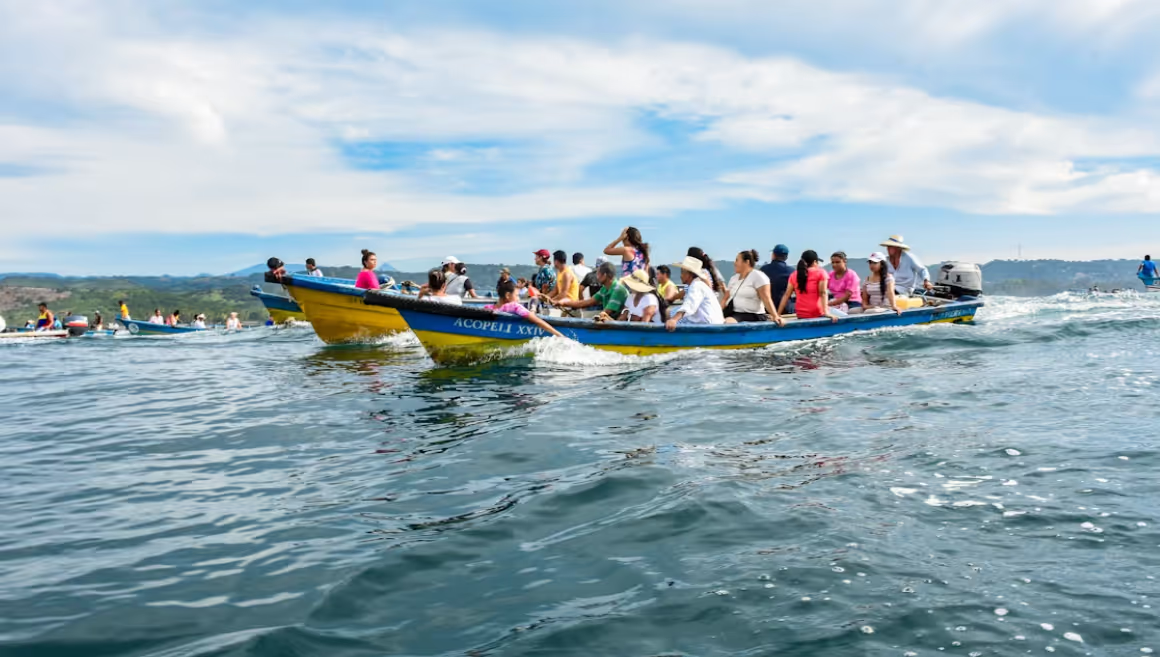Stay informed with our newsletter.
.webp)

.webp)

The centuries-old Pacu Jalur boat race in Western Indonesia has gained global recognition after an 11-year-old farmer’s dance went viral online. Once a local tradition, the event has now transformed into a cultural spectacle attracting worldwide attention and an expected 1.5 million attendees. This unique blend of tradition and digital fame highlights how local heritage can find new life on global platforms, turning a regional celebration into an international cultural phenomenon.

In today’s interconnected world, where a single video clip can catapult a person or event into international fame, cultural traditions are finding new ways to resonate with global audiences. One of the most remarkable stories of 2025 comes from Western Indonesia, where the centuries-old Pacu Jalur boat race has transformed from a beloved local tradition into a global cultural spectacle, all thanks to the unexpected virality of an 11-year-old aura farmer’s dance.
With more than 1.5 million people expected to attend this year, the Pacu Jalur is no longer just a local festival; it has become a global celebration of heritage, community, and the surprising power of social media.
The Pacu Jalur is not just any sporting event, it is one of Indonesia’s oldest and most treasured cultural festivals. Originating in the Riau Province of Western Indonesia, this boat race tradition dates back over 400 years. Historically, it was held to commemorate significant events, celebrate national holidays, and unite local communities along the Kuantan Singingi River.
The boats, known as “jalur”, are long and narrow, often stretching up to 25–40 meters, and carved from whole tree trunks. Each jalur is vibrantly painted, decorated with symbolic patterns, and manned by dozens of rowers. When they race, it isn’t merely about speed, it’s a rhythmic display of teamwork, tradition, and artistry. The atmosphere during the festival is electrifying, with music, traditional performances, and local delicacies adding to the celebration.
Until recently, the Pacu Jalur was primarily known within Indonesia, drawing regional crowds and a handful of tourists. That all changed when an unexpected star stepped onto the stage.
At the 2024 festival, while the focus was on the racing boats slicing through the Kuantan Singingi River, another performance stole the spotlight. An 11-year-old aura farmer, performing a traditional yet playful dance, was captured on video by attendees. His unfiltered joy, infectious energy, and rhythmic moves resonated with spectators.
Within hours, the clip spread across social media platforms, first within Indonesia, then across Southeast Asia, and soon globally. Platforms like TikTok, Instagram Reels, and YouTube amplified the video’s reach, sparking a wave of recreations and challenges. Influencers and content creators began imitating the dance, giving the festival unprecedented visibility.
What made the moment so powerful wasn’t just the dance itself, but what it represented: the blending of youthful spirit, cultural pride, and the universal joy of movement.
The dance’s virality exemplifies how social media is increasingly acting as a cultural bridge. For many international viewers, the Pacu Jalur was their first encounter with this Indonesian tradition. Suddenly, people from Tokyo to Toronto were Googling “Pacu Jalur,” learning about its history, and even expressing interest in visiting.
Travel influencers began spotlighting the event, while cultural organizations used the newfound attention to educate audiences about Indonesia’s rich heritage. Airlines and tourism boards also capitalized on the momentum, promoting packages to experience the festival firsthand.
In 2025, the Pacu Jalur is set to welcome more than 1.5 million attendees, many of whom are international tourists drawn by the festival’s newfound fame.
What makes this story truly unique is the way it showcases the fusion of tradition and modernity. The Pacu Jalur remains deeply rooted in cultural rituals, traditional songs, and community pride, but the viral dance has added a modern layer of entertainment that appeals to global audiences.
The impact of the viral dance goes beyond fame; it is generating tangible economic and cultural benefits.
The story of the Pacu Jalur going global thanks to a child’s dance carries broader lessons:
The Pacu Jalur is not the first tradition to gain international fame through social media, but it may be one of the most striking examples of how digital platforms can globalize local festivals. From Spain’s tomato-throwing La Tomatina to India’s Holi celebrations, cultural events have long attracted tourists, but in the past, this relied on traditional advertising and word of mouth. Today, a single viral video can do the work of millions in marketing.
As the Pacu Jalur welcomes over a million visitors this year, it represents a broader trend: the digital age is not erasing traditions, it’s amplifying them.
With its newfound global status, the Pacu Jalur faces both opportunities and challenges.
Nevertheless, the festival’s success demonstrates that when tradition meets technology, the results can be transformative.
In 2025, the world’s eyes are on a small river in Western Indonesia, not because of politics or economics, but because of a joyous dance performed by an 11-year-old aura farmer. That single viral moment breathed new life into the Pacu Jalur boat race, turning it into a global cultural phenomenon.
The story reminds us that culture is alive, adaptive, and full of surprises. Sometimes, it takes just one spark, a dance, a smile, a video, to turn centuries-old traditions into tomorrow’s global celebrations.
The Pacu Jalur is now more than a boat race; it is a powerful symbol of how authenticity, tradition, and digital platforms can converge to create something magical and unifying.
For questions or comments write to contactus@bostonbrandmedia.com
